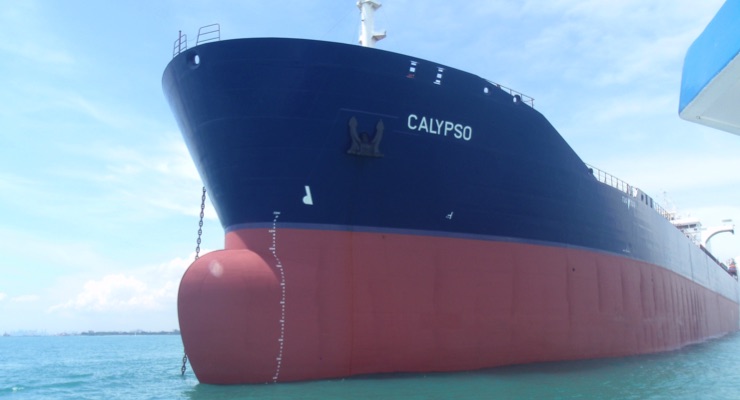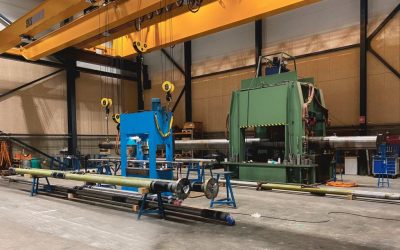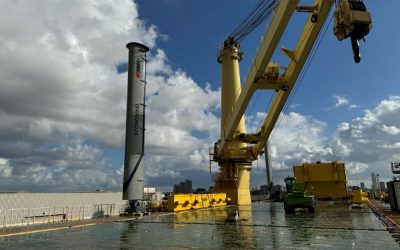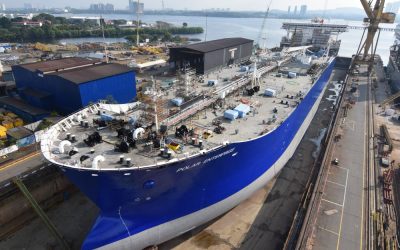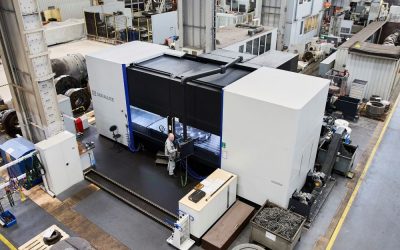Available from July this year, Seaflo Neo M1 Plus is the latest antifouling from Japan’s CMP, which is designed to be used at either newbuilding or drydocking stages. The coating incorporates biocide technology with a special synthetic agent designed to provide long-term antifouling protection, ultra low friction, low volatile organic compound (VOC) and reduced fuel consumption.
The biocide used is Selektope, also known by the generic name of medetomidine, which has been developed to protect against barnacle growth, in addition to the more widely used cuprous oxide. According to CMP, using Selektope means Seaflo Neo M1 Plus is a particularly suitable antifouling for ships that might be required to berth long term in areas with high seawater temperatures.
CMP points out that barnacle fouling on the ship’s bottom is one of the factors that has the most impact on fuel efficiency and CO2 emissions and so this new coating product is expected to improve both elements of performance. Furthermore, Seaflo Neo M1 plus is designed to provide an exceptionally smooth surface which will also contribute to the reduction of fuel consumption by reducing the frictional resistance of water flow during vessel operations.
Seaflo Neo M1 Plus has a VOC content that is about 15% less than CMP’s current Seaflo Neo Flat Z coating. The intention is that the latter will gradually be replaced with this new product as an environmental protection measure. The use of Selektope, which is formulated to be highly effective in even very low concentrations, is key to the new coating being classed as a low VOC product. It also enables less environmental impact both by keeping the hull clean and by low biocidal leaching from the coating.
Commenting on the launch of the new CMP coating, Philip Chaabane, CEO of Selektope developer I-Tech
AB, says: “Following the first commercial activity with Selektope six years ago, this product marks a new step in utilising I-Tech ́s bio-repellent active agent as a key ingredient to bring forward enhanced coating properties. I am excited to see the Selektope-powered M1 product move into the market contributing to the needs of making shipping more sustainable.”
I-Tech has recently pointed to practical evidence of Selektope’s effectiveness, with Team Tankers’ Calypso showing no barnacle growth after a 63-month period of operation. In November 2015, the vertical sides and bottom of the hull of Calypso were painted with a five-year, Selektope-containing, copper-free antifouling product. The period of service tested the efficacy of the first 60-month paint system containing the active antifouling agent and saw the vessel operate through heavily impacted fouling areas.
During this period, Calypso displayed an average weighted speed loss of only -0.5%, much less than would normally be expected. Analysis of the tanker’s performance was carried out using Molflow’s AI-ship modelling tool, Slipstream, training multiple neural network models to describe the vessel’s behaviour at certain points in time and comparing their predictions for calm atmospheric and oceanic conditions.
In addition to sailing in hotspot areas, Calypso spent long periods at anchor where there is increased risk of hard marine fouling by barnacles. Regular underwater hull inspections during the ship’s operation reported almost a complete absence of hard fouling on any of the vertical sides or flat bottom of the hull, despite the fact the ship’s hull was not cleaned at any time during the coating’s service life.
Calypso laid at anchor for one month while waiting for drydock, exposing the hull to a very high fouling risk. When the ship was taken to drydock and inspected in February 2021, the hull’s paint showed a normal amount of wear, but no growth of barnacles.
Captain Pär Brandholm, senior performance and technical manager at Team Tankers International, says: “After operating predominantly in tropical and sub-tropical regions, the fact that that the average weighted speed loss is significantly lower than for other vessels in our fleet is hugely impressive and will have a tangible impact on fuel costs and emissions.”
